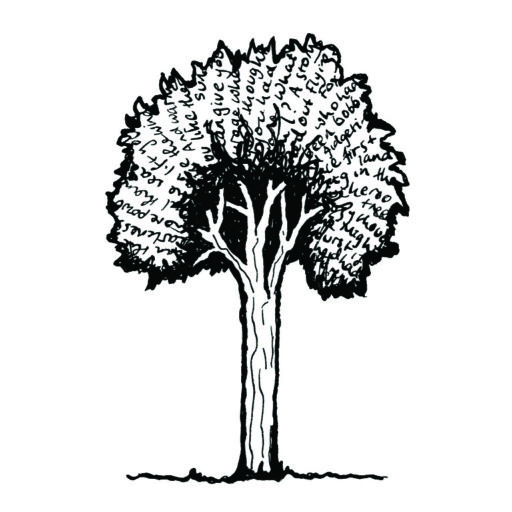
30 September 2017
The dark green teeth of the prickly rasp ferns wave upwards in the warm northerly breeze, up from the dry crunchy litter of curled eucalypt leaves, and the twigs that spring and snap when you walk. A pile of kindling, ready for the merest drifting ember, or carelessly-tossed cigarette butt. Or if it rains soon, a pile of compost.
A currawong call falls like raindrops from the wide pale sky, reminding me of how wet this place usually is. Then a treecreeper pipes, clear and cool, loud notes. Seemingly also like water – am I delirious for water, anything to quench this unusually dry, hot spring weather?
Now the currawong is wailing “Not long” as the clouds cast a thin veil over the blue sky. A promise of rain coming soon? Kookaburras break into nervous laughter that soon sputters out, as if they are too afraid to hope.
There’s a metallic twang in the cheery call of the brown thornbill, like a fence wire flicked on a hot summer’s day. I’m walking slowly beneath enormous rough-barked eucalypts, and the crackling kindling pile on the forest floor makes a great racket under each careful footstep. Rosellas are whistling singsong notes, above a rising chorus of cicadas. Whipbirds, like me, are finding it hard to keep their movements secret, as they forage low down in the rustling leaves and dry twigs. I’m searching for the bower of the satin bowerbird. Their scratchy, quarrelsome calls often seem to emanate from this patch, and the tangled lantana canes arching through the undergrowth, and the untidy webs of vines at ground level, could easily hide a bower. But all that I find is a dismembered blue plastic clothes peg (the male birds like to collect blue to impress the ladies).
Then the trees all around come into focus – that’s what it feels like when I recognise a species – it’s no longer ‘a eucalypt’ – there is now a familiarity, a story. Fibrous, reddish bark that feels strangely spongey to the touch; funnel-shaped gumnut with small caps, and smallish thin leaves (for a eucalypt). A forest of Tallowwood, Eucalyptus microcorys (‘Tallow’ because its timber has a greasy feel; microcorys meaning ‘small cap’). Their limbs expand upwards and outwards from the main trunk, exuberantly. Becoming gracefully attenuated near the leafy tips (where there is delicate feasting for koala and possum). Also curving, elegantly this way and that, or even swirling, sometimes. The arms of a dancer caught in a freeze frame, the questing movements of long fingers continuing outwards.

Tallowwood tree, Binna Burra. Pastel on paper.
The lineage of E. microcorys is older than many other Eucalypts. Perhaps these are regarded as great uncles by the other species of Eucalyptus nearby (flooded gum, blue gum, grey gum). The Tallowwood’s nearest known relatives (the Salmon Gum and Yellow Tingle) are found only in Western Australia, over 3000 km away, while E. microcorys hugs the most eastern coastline of Queensland and New South Wales. A lover of fertile soils, often found on the edge of rainforest. Were its ancestors some of the earliest Eucalypts to leave the rainforest? Did they exploit the newly-disturbed, frequently-burnt landscapes created by volcanic activity, on the rainforest fringes, where they had an edge over their fire-sensitive rainforest relatives?
Koalas have been bellowing lately, as part of their springtime mating routine, and the Tallowwood is one of their favourite food trees. The first koalas thought to have eaten Eucalyptus leaves (Phascolarctos yorkensis and P. stirtoni) are known from fossils that are about 5 million years old (earlier koalas probably ate rainforest plants). The lineage of the Tallowwood goes back far earlier than that, perhaps as far as 50 million years. But I wonder… When the ancestral koalas first ventured beyond the rainforest, was it the leaves of an ancestor of the Tallowwood they first began to nibble? And today, here in Queensland, their descendants still live together in this forest. It could be a relationship that stretches back at least 5 million years.
As I walk, the rasp ferns thicken into a carpet, and the cicadas fall silent in the midday sun. Sibilant twitterings of very small birds whisper from the undergrowth, and then are overlaid by the loud chuckling of a yellow-faced honeyeater, in the tree canopy above. I crunch my way home, as the warm wind continues to blow. I hope that the thin clouds barely masking the hot sun will soon thicken and curdle into heavy grey sheets of rain.


